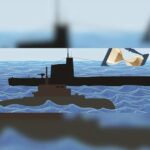
SOURCE: TIMES NOW
Amid the disengagement process between India and China in Ladakh, Defence Minister Rajnath Singh on Wednesday addressed the top commanders of the Indian Air Force (IAF), and praised the IAF for the ‘professional’ airstrikes on Pakistan-based Jaish-e-Mohammed’s terror launch pad in Balakot and rapid deployment of military assets at the forward locations in response to the prevailing situation in eastern Ladakh. Singh asserted that IAF’s actions have sent a strong message to India’s adversaries.
“He stated that the professional manner in which IAF conducted the airstrikes in Balakot as well as rapid deployment of IAF assets at forward locations in response to the prevailing situation in eastern Ladakh has sent a strong message to the adversaries,” the defence ministry said in a release.
In the address to Air Force Commanders, Singh appreciated the proactive response by the IAF in bolstering its operational capabilities over the past few months.
While mentioning the disengagement process to de-escalate tension along the LAC, Singh ‘urged the IAF to stand ready to handle any eventuality’.
Addressing the inaugural session of the Air Force Commander’s Conference, Singh said, “IAF’s role in some of the most challenging circumstances is well regarded by the nation. Their contribution during the nation’s response to COVID-19 pandemic has been highly praiseworthy.”
Meanwhile, addressing his commanders, Air Force Chief RKS Bhadauria said, the IAF was well prepared to counter short term as well as strategic threats, and the units were evenly poised to counter any aggressive action by the adversary.
The IAF chief said the response by all Commands in ensuring deployment and readiness of forces was prompt and laudable. He emphasised on the need to focus on the ability to handle situations at a short notice for ensuring a robust response.
In its 3-day meet, the IAF top brass is expected to deliberate on ways to enhance the air force’s prowess along the de-facto border with China including in Arunachal Pradesh, Sikkim and Uttarakhand, sources said.
The high-level meeting is also expected to discuss the deployment of the first batch of Rafale fighter jets in the Ladakh sector. Notably, at least six of 36 Rafale fighter aircraft are likely to join the IAF by July-end.
The meet will discuss in detail the country’s air defence system and also carry out an in-depth review of it.
“The commanders will also review the evolving security architecture in the region and ways to boost IAF’s combat capability,” PTI quoted a source as saying.
In a strong message to China, IAF has been carrying out night time combat air patrols over the eastern Ladakh region. IAF has deployed Sukhoi 30 MKI fighter jets, Jaguar and Mirage 2000 aircraft in key frontier air bases in the eastern region to challenge any Chinese aggression.
Besides deploying Apache attack choppers, the IAF has also pressed into service a fleet of Chinook heavy-lift helicopters C-17 Globemaster III transport aircraft and C-130J Super Hercules to ensure quick delivery of military equipment to forward bases.
Meanwhile, reports have emerged that Indian Navy’s MiG-29K fighter jets will be deployed in the northern sectors along the LAC.
Indian and Chinese armies have been locked in a bitter border standoff in eastern Ladakh since early May this year. The tension between the two nuclear-powered nations escalated after the deadly Galwan clash in which the Indian Army lost its 20 brave soldiers.
In an attempt to mend the relations amid the heightened tension due to the border buildup along the LAC by both the countries, National Security Advisor Ajit Doval and Chinese State Councillor and Minister of Foreign Affairs Wang Yi had a telephonic conversation on July 5. Both the leaders agreed “maintenance of peace and tranquillity in the India-China border areas was essential for the further development of bilateral relations” between the two nations.
Following the talks, China and India started the disengagement process in the first step towards de-escalation of border tensions.






